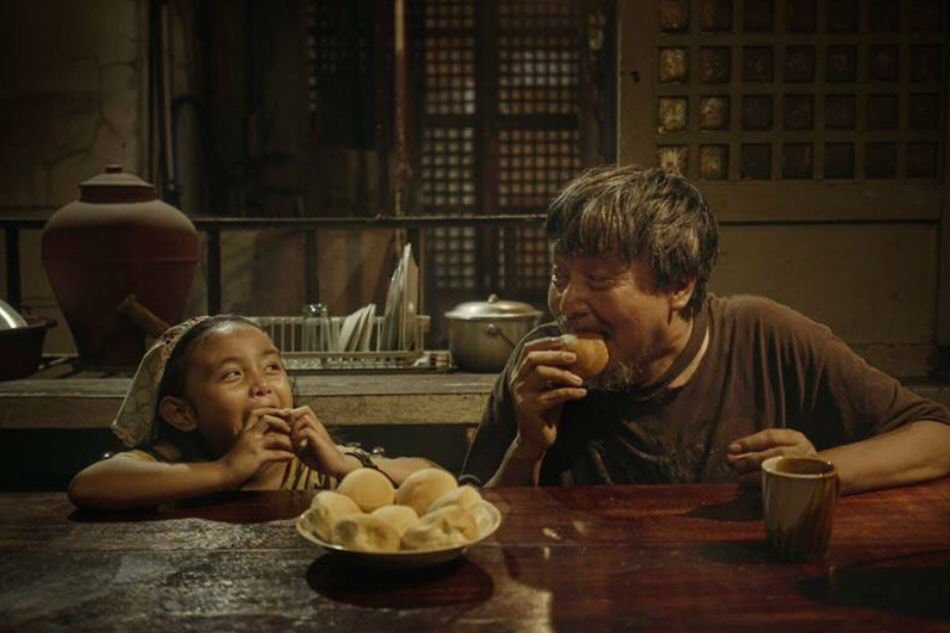
FROM THE torpid state of slumber, Salvador (Bodjie Pascua) disturbs the serenity of night with gasps of pain as he urinates with struggle and droplets of blood. He looks up at the ceiling with tears in his eyes, contemplating his miserable life spent alone while enduring the torments of a chronic kidney condition. Depressed and unaided, he had attempted to end his life several times, but only stopped when a miracle appeared in the form of a mysterious little girl.
Pan de Salawal is the debut entry of writer-director Anna Francesca Espiritu to the Cinemalaya film festival. The film revolves around a small community in Manila where a wandering child named Aguy (Miel Espinosa) transforms the depressing lives of sick people by, ironically, inflicting pain on them to restore their optimal health. However, despite Aguy’s mysterious healing power, she fails to cure Salvador’s illness. She then realizes that in order to cure her friend, a huge sacrifice must be made through a homeless child who finally found a home in the arms of Salvador.
The film started out quite slowly and uneventfully; it was merely a peek into the lives of the main characters and their respective illnesses. Albeit the first half was slow, the build up to the meeting of Aguy and Salvador proved worth the wait as the film starts to unravel its magic and creative irony through the premise of inflicting pain unto sick people to achieve miraculous healing.
Sentimentality and lack of solidity in the film’s subplots are noticeable. Faults are also evident in the development of some characters and during the initiation of climactic events. Despite these flaws, the film has more positive than negative points to ponder on such as the masterful delivery of playful humor and the usage of wordplay to foreshadow the film’s vital parts.
Aguy’s infliction of pain by slapping, pinching, and other similar actions are simultaneously realistic and hilarious. The child actor’s performance is one of the film’s strengths because Aguy shows viewers how to act realistically without compromising the essence of youth.
The child’s personality is very different from Salvador’s; Aguy is cryptic, mischievous, and initially had no intention of settling permanently. On the other hand, Salvador is hopeless and tired of people leaving him. Pairing up these two opposites was a huge risk. Yet eventually, through Espiritu’s dynamic directing, a heartfelt development of their relationship eliminated this risk and made them a perfect match.
Although set in the slums, poverty is not the focus of the film. Instead, through the successful narration of the supporting characters’ stories, it presents the beauty of the Filipino psyche by showing how they cherish simple joys such as dipping pan de sal in coffee. The film touches the heart and teaches the audience to appreciate simplicity.
The movie also presents the reality of man’s imperfection. It shows that everyone deals with their own personal demons and anxieties in life and teaches viewers how to conquer them. Pan de Salawal successfully applied magical realism by presenting how Aguy’s healing power defies the inevitable realities of human life, such as death, to achieve a harmonious ending.
Espiritu’s film is a reminder that it is acceptable to believe in miracles amid a cynical world. Miracles can happen through more than just divine intervention—they can be entirely human or simply products of kindness. Pan de Salawal shows that healing can be a painful procedure, but that allowing oneself to endure suffering and become vulnerable can incite change and renewal. Ultimately, the film tells viewers that Aguy is not merely a magical child of fiction, but a sleeping entity within them waiting to be discovered. F



